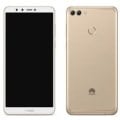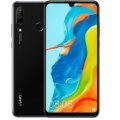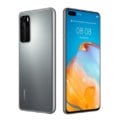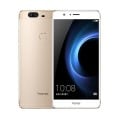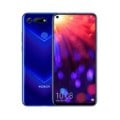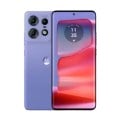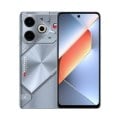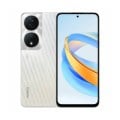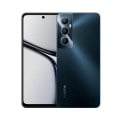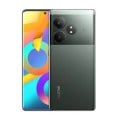Huawei Honor 9



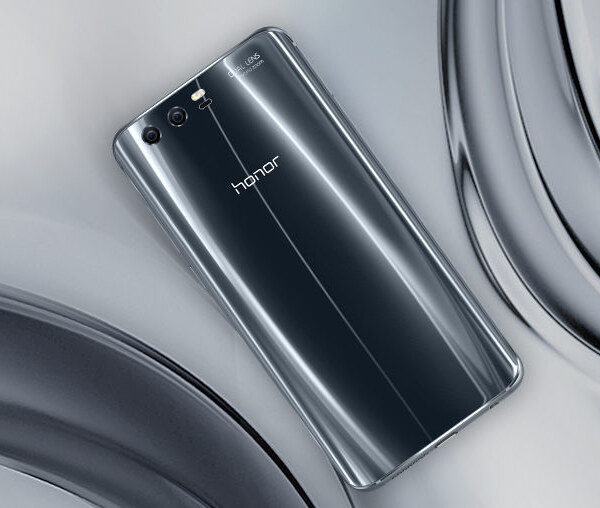

-
Processor: Kirin 960
-
RAM: 4GB | 6GB
-
Storage: 64GB | 64/128GB
-
Display: 5.15 inch
-
Camera: Primary 20 MP (Mono) + 12 MP (RGB), f/2.2 + Secondary 8 MP f/2.0
-
Battery: Android 7.0 (Nougat)
Huawei Honor 9 - PRICE
-
 4GB/6GB, 64GB/128GB
from $349
4GB/6GB, 64GB/128GB
from $349
View Offer -
 4GB/64GB
$299.99
4GB/64GB
$299.99
View Offer -
 6GB/64GB
$418.50
6GB/64GB
$418.50
View Offer -
 6GB/128GB
$449.99
6GB/128GB
$449.99
View Offer
Honor 9 Availability
The Honor 9 was officially announced 13th June 2017, in Shanghai, China, and released 16th June 2017.
For European customers, the device is available to purchase on the 27th June 2017. Countries included United Kingdom, France, Germany, Italy and Spain.
According to a source, the smartphone will be announced on August 2017 in India. However, there is no official confirmation by Huawei when the device will be released in India. This applies to US and Australian customers also as the countries are still waiting for the Honor 8 Pro’s official release.
July 18 2017 – Black variant available on VMall.
July 19 2017 – Report of Honor 9 – Premium Edition (6GB + 128GB) will be available for shipment on 28th August 2017. Pre-orders spotted on Swiss Huawei Site.
August 16 2017 – Huawei unveils Robin Egg Blue limited edition variant in China (via pre-sale)
September 04 2017 – Huawei releases Robin Egg Blue variant to Europe (IFA 2017).
Device Characteristics
The Honor 9 original came with four colors: Sea Blue, Amber Gold, Black, and Seagull Gray.
On the 11th August 2017, Huawei released a new color named “Robin-Egg Blue”. This variant is limited to a 6GB RAM + 64GB Internal Storage model.
The dual camera set-up lacks optical image stabilization.
The smartphone shares similar components to Huawei’s P10.
Target Market
The Honor 9 is aimed toward the upper mid-range to the lower high-end smartphone market on price. The device has Huawei’s high-end 2016 specifications (the CPU and RAM) at a upper mid-tier price.
Device comparisons
Predecessor comparison: Honor 8 vs Honor 9.
Related News
(Source)
All videos or content not watermarked by GizmoChina have been used for discussion under ‘Fair Use’ .
This profile is under construction, details are currently not guaranteed to be 100% accurate.
Huawei Honor 9 - SPECIFICATIONS
General
-
ModelAL00 (China), AL10 (China), L09 (EU/Global), TL10 (China)
-
Released16/06/17
-
StatusAvailable
Design
-
Type Design Type called form factor refers to a mobile phone's size, shape, and style as well as the layout and position of major components of phone. There are three major form factors seen in mobile phones => bar phones, folding phones and sliding phones.Bar
-
Dimensions147.3 x 70.9 x 7.5 mm (5.80 x 2.79 x 0.30 in)
-
Weight155 g (5.47 oz)
-
WaterproofNo
Display
-
Display Type Display Technology => A number of display technologies and types used in mobile phones => TFT (Thin Film Transistor), IPS (In-Place Switching), OLED (Organic Light Emitting Diode), AMOLED (Active-Matrix Organic Light-Emitting Diode), Super AMOLED (an even advanced version of AMOLED), Resistive Touchscreen (Resistive touchscreens contain two layer of conductive material with a very small gap between them which acts as a resistance), Capacitive Touchsceen (Capacitive touchscreen technology consists of a layer of glass coated with a transparent conductor)LTPS
-
Size5.15 Inch
-
Resolution1920 x 1080 (FHD)
-
Display Colors Display Colors is refers to the number of different shades of colors that the screen is capable of displaying => 64K colors, 256K colors and 16 million colors, Obviously 16M is highest available range of colors and better than others.16.7 million colors
-
Pixel Density Pixel Density (PPI) is refers to the concentration of pixels on a particular display, measured in pixels per inch (ppi). Pixel density is calculated by dividing the diagonal pixel resolution of a display by its diagonal size, higher pixel density better display quality.428 ppi
-
Touch ScreenYes
-
Display Protection Display Protection => Gorilla Glass is a special alkali-aluminosilicate glass shield with exceptional damage resistance that helps protect mobile displays from scratches, drops, and bumps of everyday use, It is always better to go for a smartphone with Gorilla Glass for that added protection and peace of mind.2.5D Glass
-
FeaturesCapacitive Touch Screen
Hardware
-
GPU GPU (Graphics Processing Unit) is a single-chip processor designed to rapidly manipulate and alter memory to accelerate the creation of images in a frame buffer intended for output to a display, This includes things such as lighting effects, object transformations, and 3D motion.Mali-G71 MP8
-
RAM (Memory) RAM (Random Access Memory) is a type of computer memory that can be accessed randomly, any byte of memory can be accessed without touching the preceding bytes that allows information to be stored and accessed quickly from random locations. RAM is the most common type of memory found in computer systems, smartphones, tablets and other electronic devices.4GB or 6GB
-
Internal Storage Internal Storage is a data storage space (flash memory) mostly used in smartphones, tablets and other electronic devices where operating system, apps, music, photos, videos, files and other user data Is stored.64GB or 128GB (6GB Model Only)
-
Memory Card Slot Memory Card Slot is a special slot for inserting a memory card. Memory cards allow you to expand the phone's built-in memory, A memory card (sometimes called a flash memory card or a storage card) is a small storage medium used to store data such as text, pictures, audio, and video, for use on small, portable or remote computing devices such as mobile phones, mp3 players, digital cameras.Yes (up to 256GB)
-
Sensors Sensors are electronic components that detects and responds to some type of input from the physical environment. The specific input could be light, heat, motion, moisture, pressure and location, The output is generally a signal that is converted to use in computing systems, a location sensor, such as a GPS receiver is able to detect current location of your electronic device.Ambient Light Sensor, E-Compass, Gravity Sensor, Gyroscope, Hall Sensor, Proximity Sensor
Software
-
Operating System OS => Every computer system run on a base software called Operating System (OS). Operating System controls all basic operations of the computer (such as smartphone, PDAs, tablet computers and other handheld devices). The Operating System allows the user to install and run third party applications (apps), apps are used to add new functionality to the device.Android 7.0 (Nougat)
-
User Interface UI or user interface of a device is the look and feel of the on-screen menu system. How it works, its color scheme, how it responds to button presses, all of these things are part of the user interface.EMUI 5.1
Camera
-
Rear Camera Camera is able to capture photographs and usually videos, The most important characteristics of a camera are the resolution (measured in megapixels), lens focus type (fixed or automatic), higher megapixel cameras are known to capture higher quality photos, but not always a good measurement of the photos quality.20 MP (Mono) + 12 MP (RGB), f/2.2
-
ImageMax Resolution: 5120×3840
-
Flash Flash Light => There is commonly two types of flash lights are used in camera mobile phones, LED Flash (LED flash offers lower power consumption with drive circuitry that takes up very little room, LEDs can be strobed faster than any other light source), Xenon Flash (xenon flash produces an extremely intense full-spectrum white light for a very short duration)Dual LED Flash
-
Front Camera8 MP, f/2.0
Network
-
SIM SIM (Subscriber Identity Module) is a small card that contains mobile network subscriber's account information. This allows the phone using the card to attach to a mobile network. The SIM card is most commonly associated with GSM and UMTS mobile networks. Moving a SIM card from one phone to another allows a subscriber to switch mobile phones without having to contact their mobile network carrier. SIM cards can also be used by a phone to store limited amounts of data, such as phone numbers and text messages.Nano SIM
-
Dual SIMYes
Connectivity
-
Wi-fi Wi-Fi is a popular wireless networking technology using radio waves to provide high-speed network connections that allows devices to communicate without cords or cables, Wi-Fi is increasingly becoming the preferred mode of internet connectivity all over the world.Wi-Fi 802.11 a/b/g/n/ac, Dual-Band, Wi-Fi Direct
-
USBUSB-C 2.0
-
GPS GPS The Global Positioning System is a satellite-based radio navigation system, GPS permits users to determine their position, velocity and the time 24 hours a day, in all weather, anywhere in the world, In order to locate your position, your device or GPS receiver must have a clear view of the sky.Yes GPS / Glonass / Big Dipper
-
NFC NFC (Near field communication) is a set of standards for smartphones and similar devices to establish peer-to-peer radio communications with each other by touching them together or bringing them into proximity, usually no more than a few inches.Yes
-
Headphone JackYes
Battery
-
PlacementNon-Removable
Media
-
Video PlaybackMP4 (H.264 Support)
-
LoudspeakerYes
Data
-
SpeedHSPA, HSPA+, LTE, LTE+

